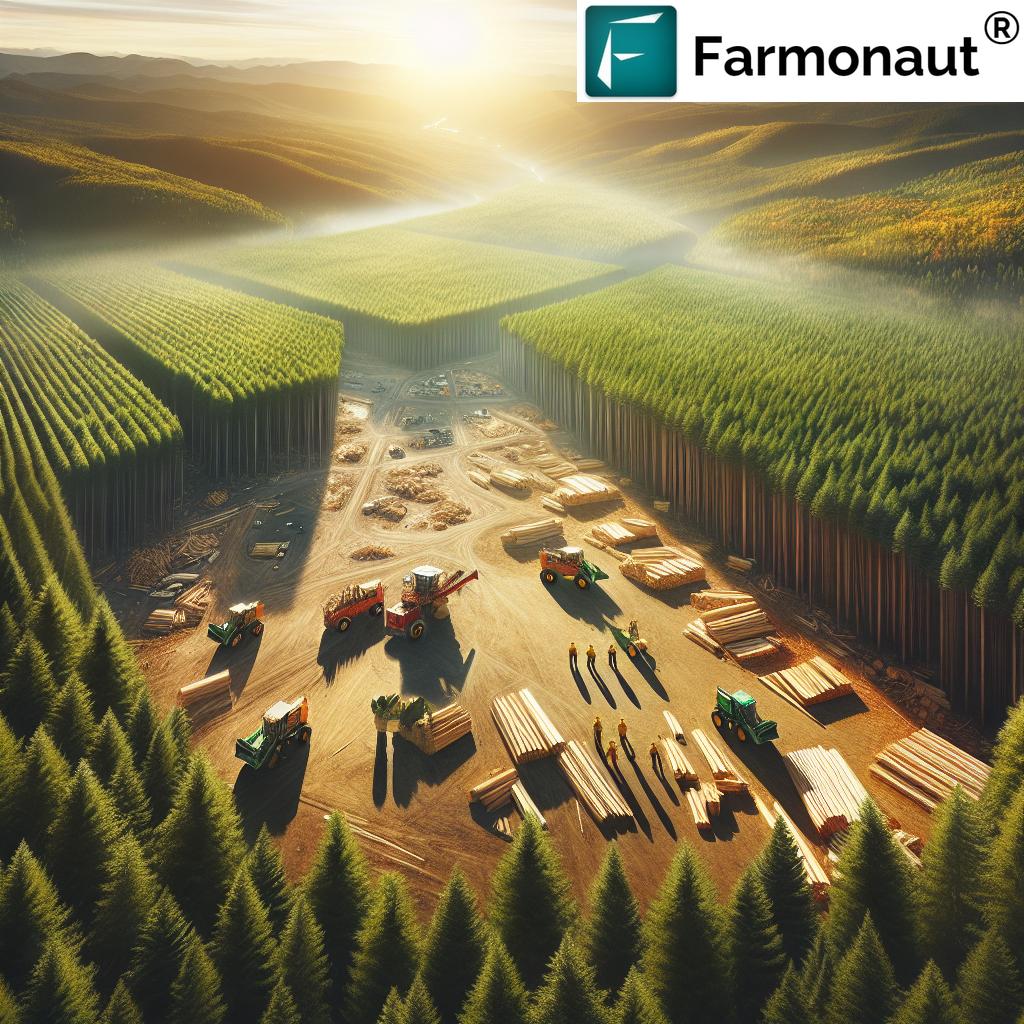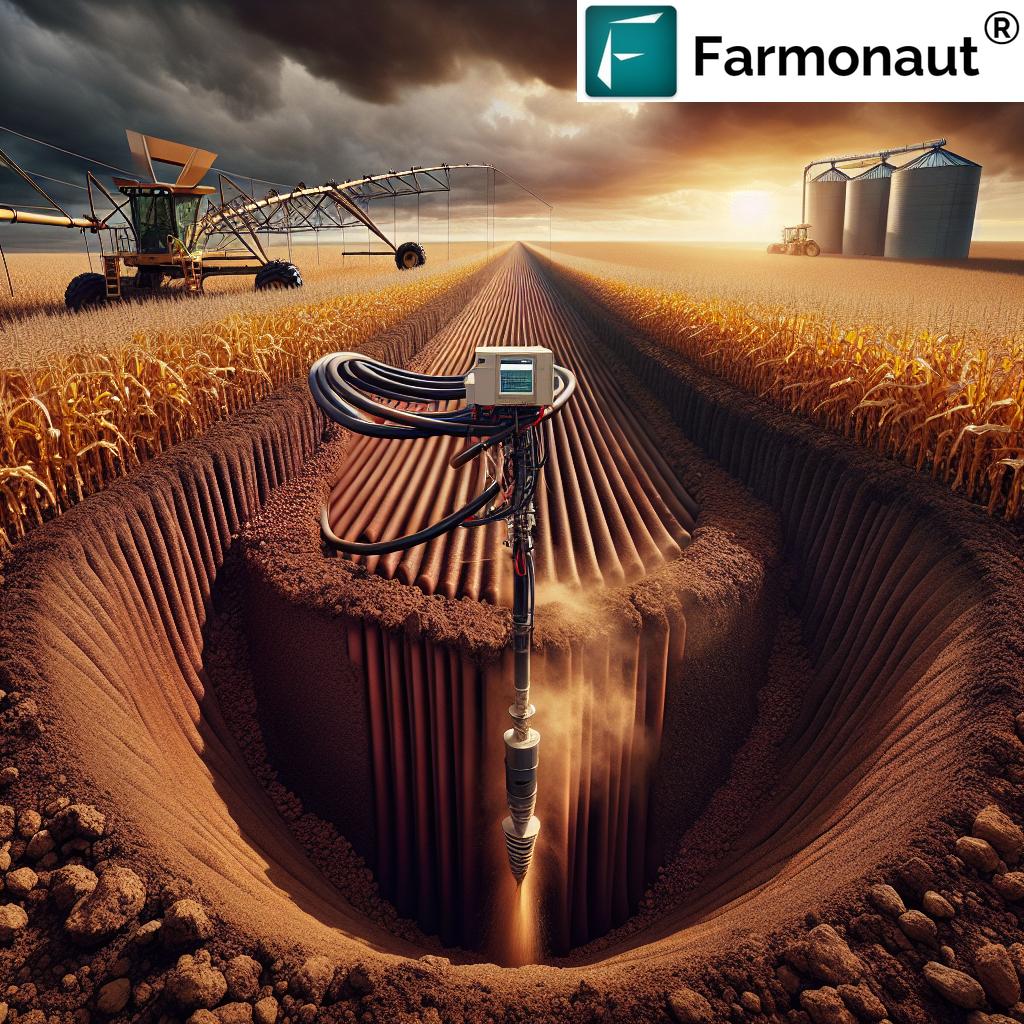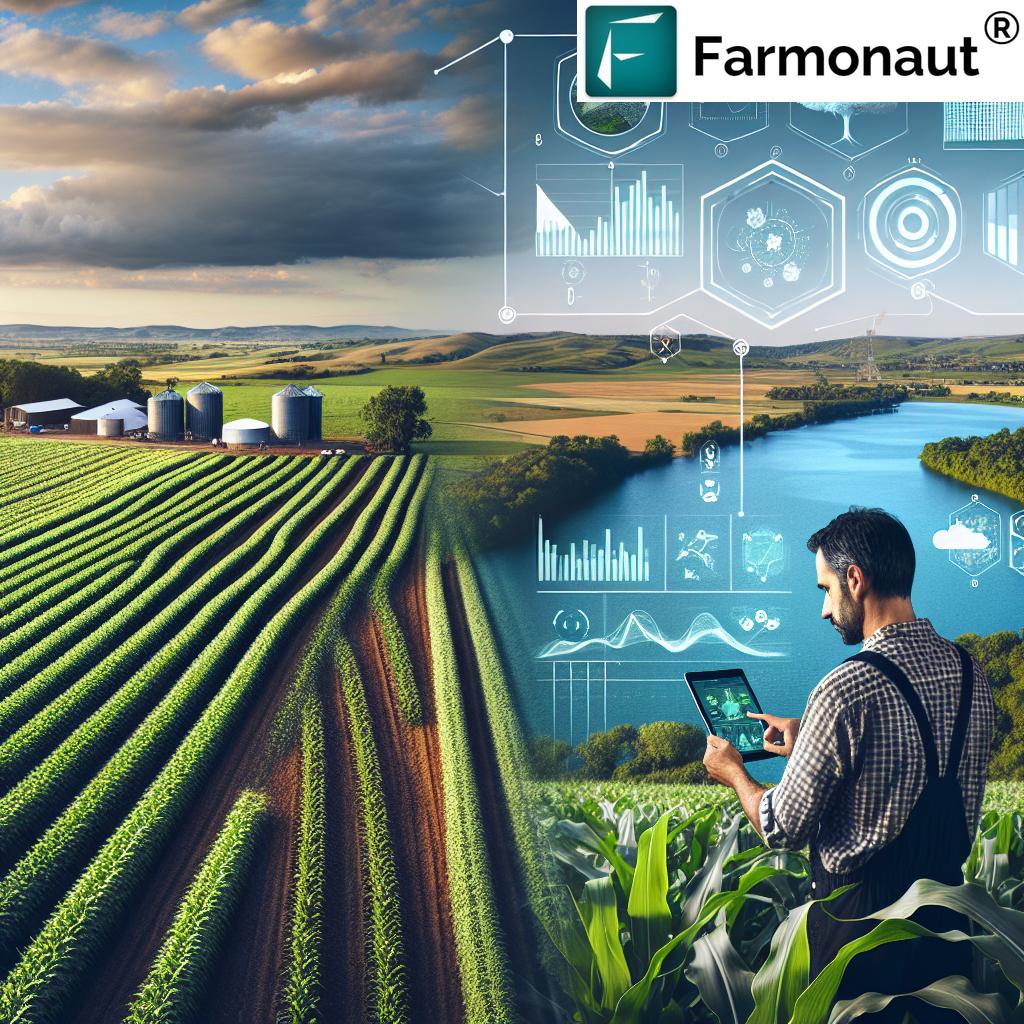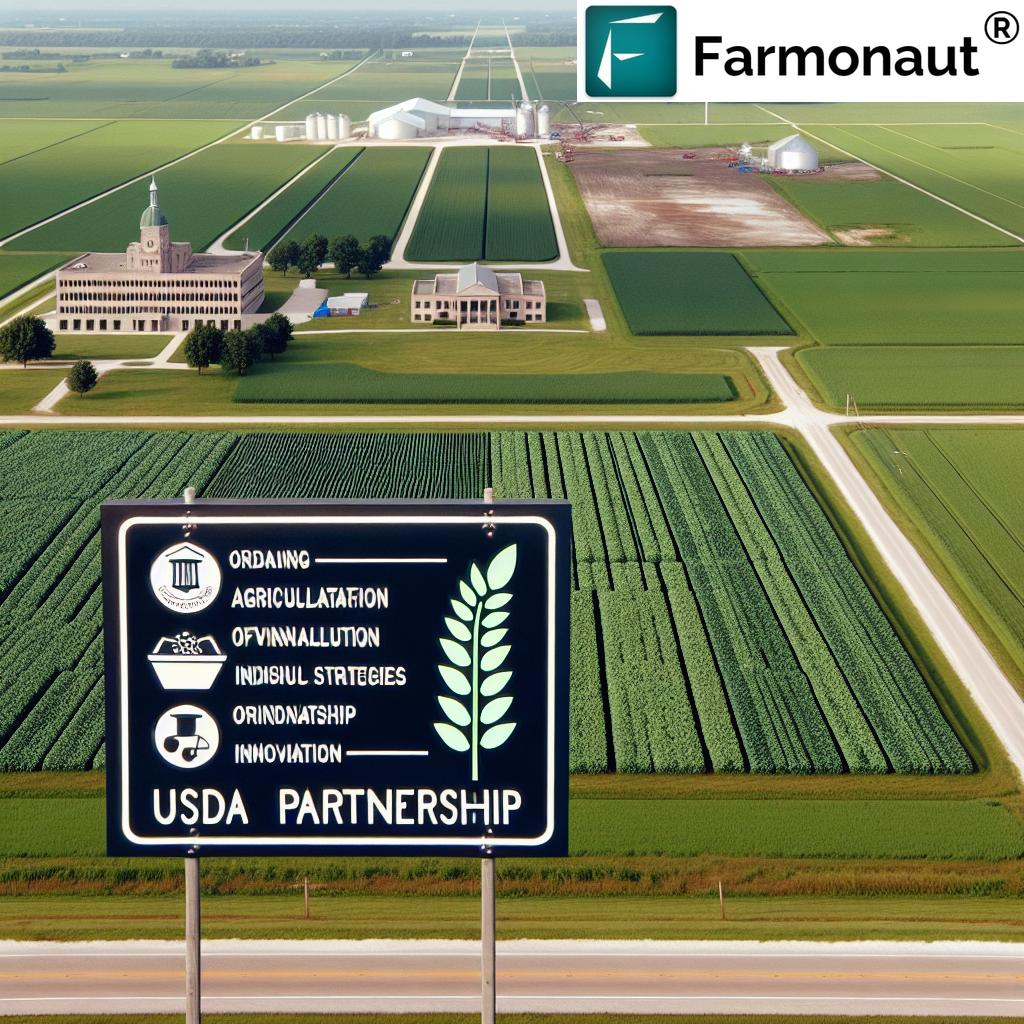Balancing Act: New York’s Struggle to Preserve Farmland Amid Solar Energy Expansion
“New York has lost over 60% of its farmland since 1950, highlighting the urgent need for preservation strategies.”
In the heart of New York’s agricultural landscape, a complex battle is unfolding. As we delve into the intricate world of sustainable agriculture practices and farmland preservation strategies, we find ourselves at the crossroads of tradition and innovation. The growing prevalence of solar energy on farmland has sparked a heated debate within our agricultural communities, challenging farmers to strike a delicate balance between renewable energy development and food production.
This blog post explores the economic impact of agricultural land conservation efforts and the pressing need for farm income diversification. We’ll examine the challenges faced by small farms, including rising costs and fierce competition for land, while considering the broader implications for food security and rural economies. Join us as we navigate the complexities of leasing farmland for solar panels, discussing both the financial lifeline it offers struggling farmers and the potential long-term consequences for agricultural production.
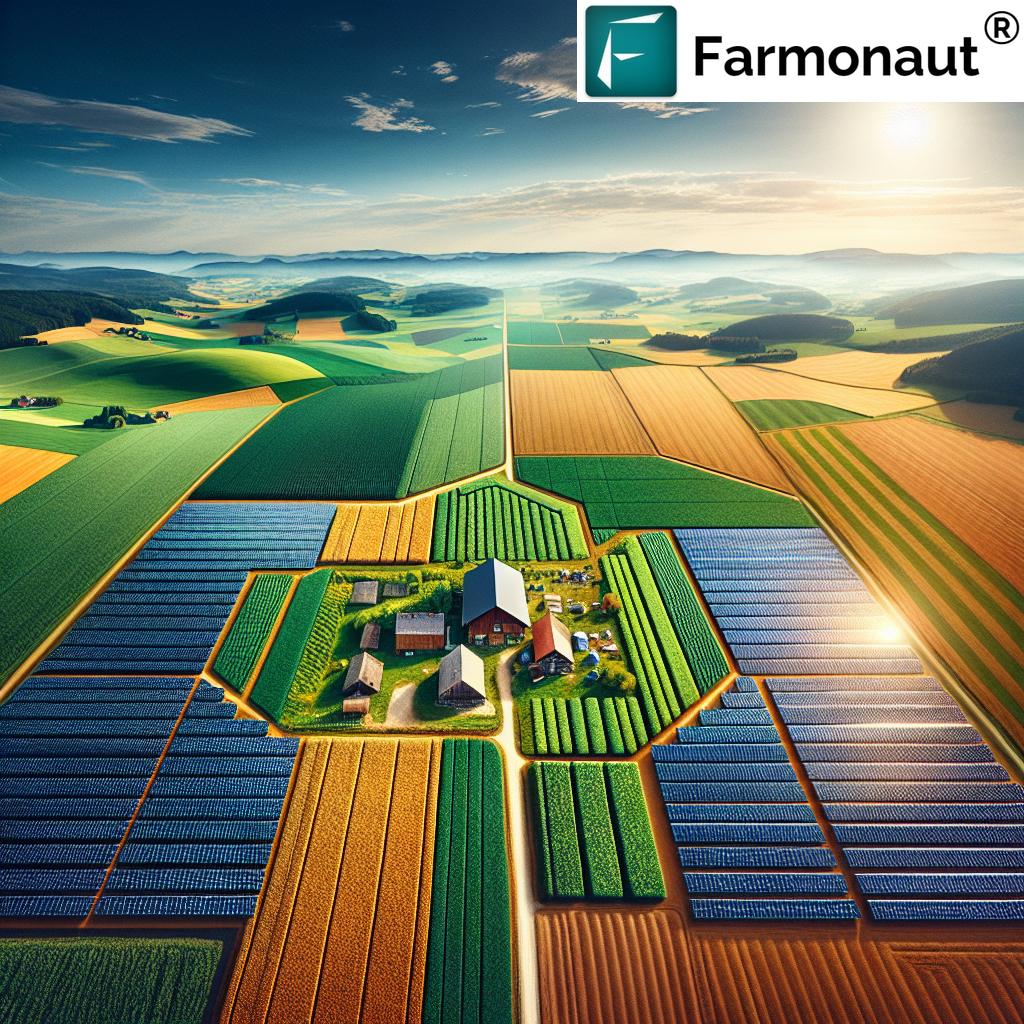
The Changing Face of New York’s Agricultural Landscape
New York’s agricultural sector has long been a cornerstone of the state’s economy and cultural identity. However, recent years have seen a dramatic shift in the landscape, both literally and figuratively. The Comptroller’s Office report paints a sobering picture: while farms grossed $8.5 billion in 2022 – a significant 47.8% increase since 2017 – expenses also surged to $6.2 billion. More alarmingly, the period from 2012 to 2022 saw a loss of nearly 14% of farms and over 9% of farmland.
This decline in agricultural land is not solely due to economic pressures. Non-agricultural developments, particularly solar farms, have played a significant role. In fact, solar installations accounted for a staggering 1,728 acres of lost farmland. This trend has set off alarm bells among farmers, policymakers, and food security advocates alike.
The Solar Dilemma: Renewable Energy vs. Food Production
The rapid expansion of solar energy on farmland presents both opportunities and challenges for New York’s agricultural communities. On one hand, leasing land for solar panels can provide a much-needed financial boost for struggling farmers. On the other, it reduces the available land for food production, potentially threatening long-term food security and the viability of neighboring farms.
“Solar leases can offer farmers up to $2,000 per acre annually, providing a significant income boost for struggling operations.”
This financial incentive is hard to ignore, especially for small farmers grappling with rising costs and unpredictable market conditions. However, the long-term implications of this trend are cause for concern. As more agricultural land is converted to solar farms, we risk losing valuable food-producing acreage and disrupting the delicate balance of rural economies.
The Economic Impact of Agricultural Land Conservation
Preserving farmland is not just about maintaining picturesque rural landscapes; it’s a critical economic issue. Agricultural land conservation efforts play a vital role in sustaining local economies, preserving jobs, and ensuring food security. However, these efforts are increasingly challenged by the allure of solar energy development.
Let’s break down the economic factors at play:
- Farm Income: Traditional farming operations face volatile commodity prices and unpredictable weather conditions, making it difficult to maintain stable income.
- Solar Leases: Leasing land for solar panels can provide farmers with a steady, guaranteed income stream, often exceeding what they might earn from crop production.
- Land Values: The competition for land between agricultural and solar uses is driving up property values, making it harder for young farmers to enter the industry.
- Rural Job Market: While solar installations create some jobs, they may not offset the potential loss of agricultural employment in the long term.
To address these challenges, we need innovative solutions that allow for both renewable energy development and the preservation of our vital agricultural resources. This is where advanced agricultural technologies can play a crucial role.
Farmonaut, a pioneering agricultural technology company, offers satellite-based farm management solutions that can help farmers optimize their land use and increase productivity. By leveraging technologies like real-time crop health monitoring and AI-based advisory systems, farmers can make more informed decisions about resource allocation and crop management. Learn more about Farmonaut’s innovative solutions:
Small Farm Challenges in the Face of Solar Expansion
Small family farms, like the Nelson family’s Dellavale Farm operating since 1918, are at the forefront of this struggle. These farms, often deeply rooted in their communities, face a myriad of challenges:
- Rising operational costs
- Increasing competition for land
- Pressure from development initiatives, including solar projects
- Difficulty accessing financing
- Market volatility
Tom Nelson’s sentiment echoes the feelings of many small farmers across New York: a deep emotional connection to farming coupled with the harsh realities of modern agricultural economics. The decision to lease land for solar panels is often made out of financial necessity rather than choice, highlighting the need for more robust support systems for small agricultural operations.
The Ripple Effect on Local Communities
The impact of large-scale solar farms extends far beyond the boundaries of individual properties. Local communities are grappling with a range of concerns:
- Landscape Changes: The visual impact of solar installations can alter the character of rural areas, potentially affecting tourism and property values.
- Agricultural Heritage: There’s a growing fear that the loss of farmland could erode the agricultural heritage that defines many New York communities.
- Economic Shifts: As farms are converted to solar facilities, there’s concern about the long-term economic sustainability of rural areas traditionally dependent on agriculture.
- Cultural Impact: In some regions, such as areas with significant Amish populations, solar developments pose risks to traditional ways of life and community structures.
These concerns have led to calls for a more balanced approach to land use planning and development. Local residents and organizations are advocating for:
- Restoration of local control over land development decisions
- Better evaluation of the cumulative impacts of large-scale solar projects
- Policies that protect prime agricultural land from non-farm development
- Incentives for solar development on non-agricultural lands
Innovative Solutions: Balancing Energy and Food Production
As we face these challenges, it’s crucial to explore innovative solutions that can help balance the need for renewable energy with the preservation of our agricultural resources. Here are some strategies being considered:
- Agrivoltaics: This approach involves co-locating solar panels and agricultural production on the same land. By carefully designing solar installations, it’s possible to continue farming activities beneath and around the panels.
- Precision Agriculture: Advanced farming techniques, supported by technologies like those offered by Farmonaut, can help farmers maximize productivity on smaller land areas, potentially freeing up space for solar development without compromising food production.
- Smart Land Use Planning: Developing comprehensive land use policies that prioritize the preservation of prime agricultural land while identifying suitable areas for solar development.
- Community Solar Projects: Encouraging smaller-scale, community-owned solar projects that can provide clean energy without large-scale land conversion.
- Conservation Easements: Expanding programs that provide financial incentives for farmers to permanently protect their land from non-agricultural development.
For farmers looking to optimize their land use and improve productivity, Farmonaut’s satellite-based solutions offer valuable insights. Explore how these tools can help you make data-driven decisions:
Policy Recommendations for Sustainable Growth
To address the complex issues surrounding farmland preservation and solar energy development, policymakers need to consider a range of measures:
- Zoning Regulations: Implement stricter zoning laws that protect prime agricultural land from non-farm development, including large-scale solar projects.
- Tax Incentives: Offer tax breaks or other financial incentives for farmers who maintain their land in active agricultural production.
- Farmland Protection Programs: Expand and fully fund programs that purchase development rights from farmers, ensuring long-term agricultural use.
- Renewable Energy Siting Guidelines: Develop comprehensive guidelines for siting renewable energy projects that prioritize the use of marginal or non-agricultural lands.
- Support for Agrivoltaics: Provide research funding and incentives for the development and implementation of agrivoltaic systems.
- Farm Viability Programs: Invest in programs that help farmers diversify their income streams and adopt sustainable practices without resorting to land conversion.
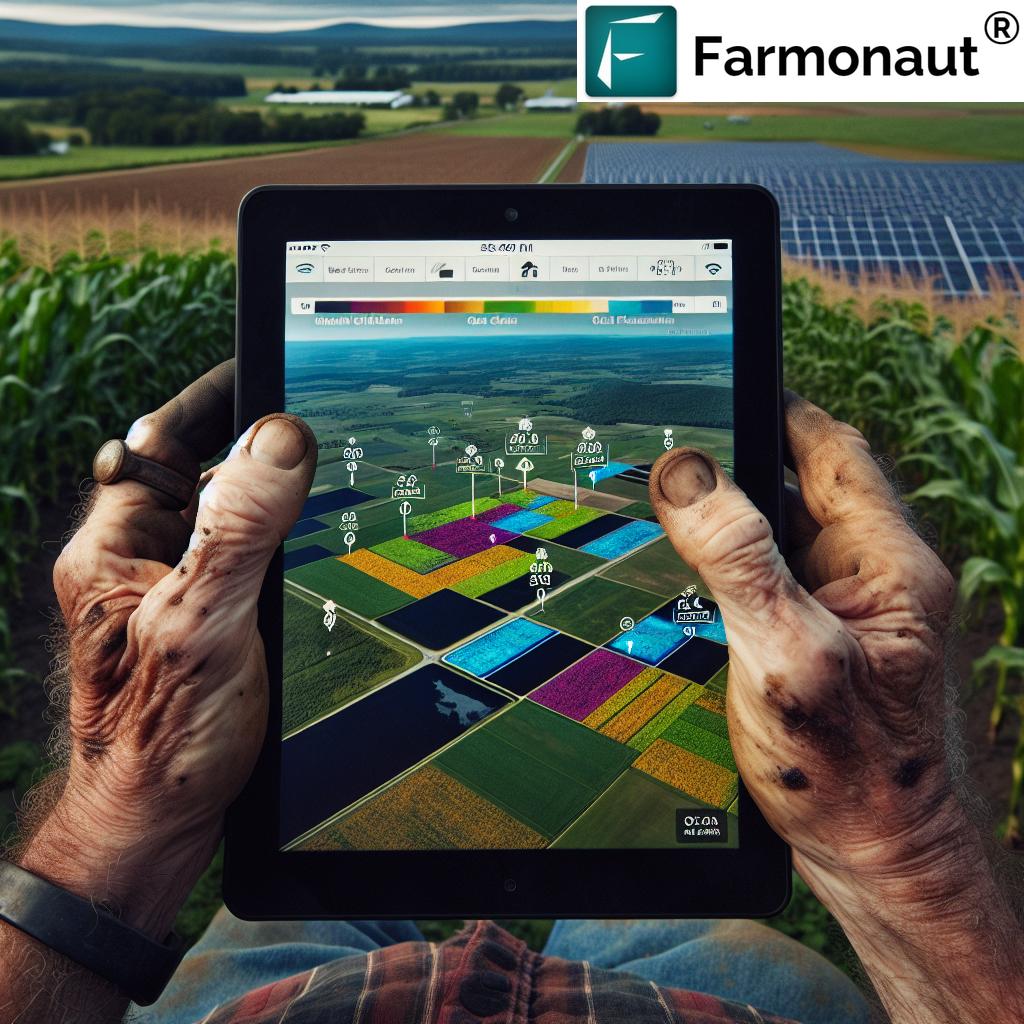
The Role of Technology in Sustainable Agriculture
As we navigate the challenges of balancing renewable energy development with farmland preservation, technology plays a crucial role in optimizing agricultural practices and land use. Advanced agricultural technologies can help farmers increase productivity on existing farmland, potentially reducing the pressure to convert agricultural land for other uses.
Farmonaut’s satellite-based farm management solutions offer a range of tools that can contribute to more sustainable and efficient farming practices:
- Real-time Crop Health Monitoring: By utilizing multispectral satellite imagery, farmers can track vegetation health indices like NDVI, allowing for early detection of crop stress and timely interventions.
- AI-driven Advisory Systems: Advanced algorithms analyze satellite data and other inputs to provide personalized recommendations for crop management, helping farmers make data-driven decisions.
- Resource Management Tools: Features for optimizing water usage, fertilizer application, and other inputs can lead to more sustainable farming practices and improved yields.
- Carbon Footprint Tracking: As environmental concerns become increasingly important, tools for monitoring and reducing carbon emissions can help farms stay compliant with regulations and meet sustainability goals.
By leveraging these technologies, farmers can potentially increase their productivity and profitability without expanding their land footprint, contributing to the overall goal of farmland preservation.
Comparative Analysis: Agriculture vs. Solar Energy Land Use
To better understand the trade-offs between preserving farmland for agriculture and converting it to solar energy production, let’s examine a comparative analysis of land use in New York:
| Aspect | Traditional Agriculture | Solar Farms |
|---|---|---|
| Estimated Acreage in NY | 6.9 million acres (as of 2022) | Approx. 1,728 acres (converted from farmland) |
| Annual Revenue per Acre | $1,200 – $1,500 (varies by crop) | Up to $2,000 (solar lease) |
| Jobs Created per 100 Acres | 2.5 – 5 (depends on crop type) | 0.5 – 1 (construction and maintenance) |
| Environmental Impact Score (1-10) | 6 (varies with farming practices) | 8 (renewable energy, but land use change) |
| Food Production Capacity (tons/year) | Varies widely by crop | None |
| Energy Production (MWh/year) | N/A | Approx. 1,000 MWh per acre |
| Long-term Land Viability | High (with proper management) | Medium (potential for land restoration) |
This comparison highlights the complex nature of the decision-making process facing New York’s agricultural communities. While solar leases can provide higher per-acre revenue, they come at the cost of food production capacity and potentially long-term agricultural viability. The challenge lies in finding a balance that meets energy needs without compromising food security and rural economies.
Community Perspectives and Local Initiatives
The debate over farmland preservation and solar energy development has sparked a range of local initiatives and community responses across New York. Here are some examples:
- Montgomery County’s Proposed Law: This initiative aims to force developers to consider the broader consequences of their projects, making the effects known to the public and local governance.
- Grassroots Movements: Local residents are forming groups to advocate for farmland preservation and more balanced approaches to renewable energy siting.
- Farm-to-Table Initiatives: Communities are strengthening local food systems to increase demand for locally-produced food, supporting the economic viability of farms.
- Educational Programs: Schools and community organizations are developing programs to educate the public about the importance of local agriculture and the challenges faced by farmers.
These local efforts highlight the importance of community engagement in shaping the future of New York’s agricultural landscape.
The Path Forward: Integrating Technology and Policy
As we look to the future, it’s clear that addressing the challenges of farmland preservation and renewable energy development will require a multifaceted approach. This approach must integrate innovative technologies, thoughtful policies, and community engagement.
Technology solutions, such as those offered by Farmonaut, can play a crucial role in this integrated approach:
- Precision Agriculture: By optimizing resource use and increasing yields, precision farming techniques can help make smaller land areas more productive.
- Data-Driven Decision Making: Access to real-time data and AI-driven insights can help farmers make more informed decisions about land use and crop management.
- Sustainable Practices: Technologies that support sustainable farming practices can help reduce the environmental impact of agriculture, potentially easing some of the pressure for land conversion.
For developers and businesses looking to integrate agricultural data into their systems, Farmonaut offers API access to its satellite and weather data. Explore the possibilities:
Farmonaut API
API Developer Docs
Conclusion: A Balanced Future for New York’s Farmlands
The struggle to preserve farmland amid the expansion of solar energy in New York is a complex issue that touches on economic, environmental, and social concerns. As we’ve explored throughout this blog post, there are no easy solutions. However, by embracing innovative technologies, implementing thoughtful policies, and fostering community engagement, we can work towards a future that balances the need for renewable energy with the preservation of our vital agricultural resources.
Key takeaways include:
- The importance of preserving prime agricultural land for food security and rural economies
- The potential of agritech solutions to increase farm productivity and sustainability
- The need for balanced policies that support both renewable energy development and farmland preservation
- The critical role of community engagement in shaping local land use decisions
As we move forward, it’s crucial that all stakeholders – farmers, policymakers, renewable energy developers, and community members – work together to find innovative solutions that meet our energy needs while preserving the agricultural heritage and food production capacity of New York State.
FAQs
- Q: How much farmland has New York lost in recent years?
A: According to recent reports, New York lost nearly 14% of its farms and over 9% of its farmland between 2012 and 2022. - Q: What are the main challenges facing small farms in New York?
A: Small farms face rising operational costs, increasing competition for land, pressure from development initiatives, difficulty accessing financing, and market volatility. - Q: How can technology help in balancing farmland preservation and solar energy development?
A: Technologies like precision agriculture, satellite-based crop monitoring, and AI-driven advisory systems can help increase farm productivity on existing land, potentially reducing the pressure for land conversion. - Q: What are some policy recommendations for preserving farmland?
A: Recommendations include stricter zoning laws, tax incentives for active farming, expanded farmland protection programs, and comprehensive renewable energy siting guidelines. - Q: How do solar leases impact farmers financially?
A: Solar leases can offer farmers up to $2,000 per acre annually, providing a significant and stable income boost for struggling operations.






